Flag in the Wind
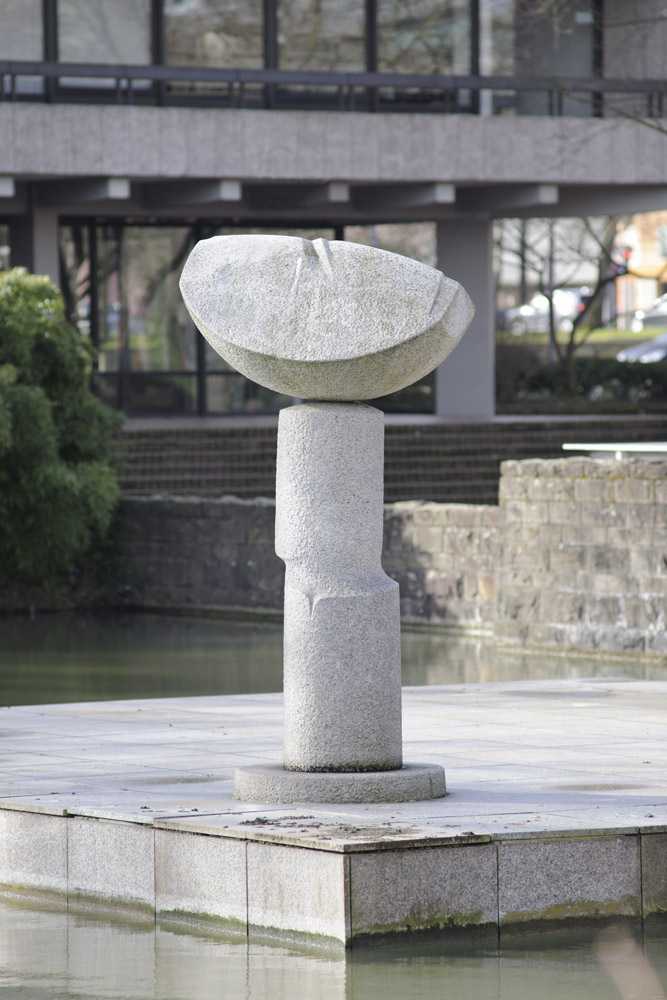
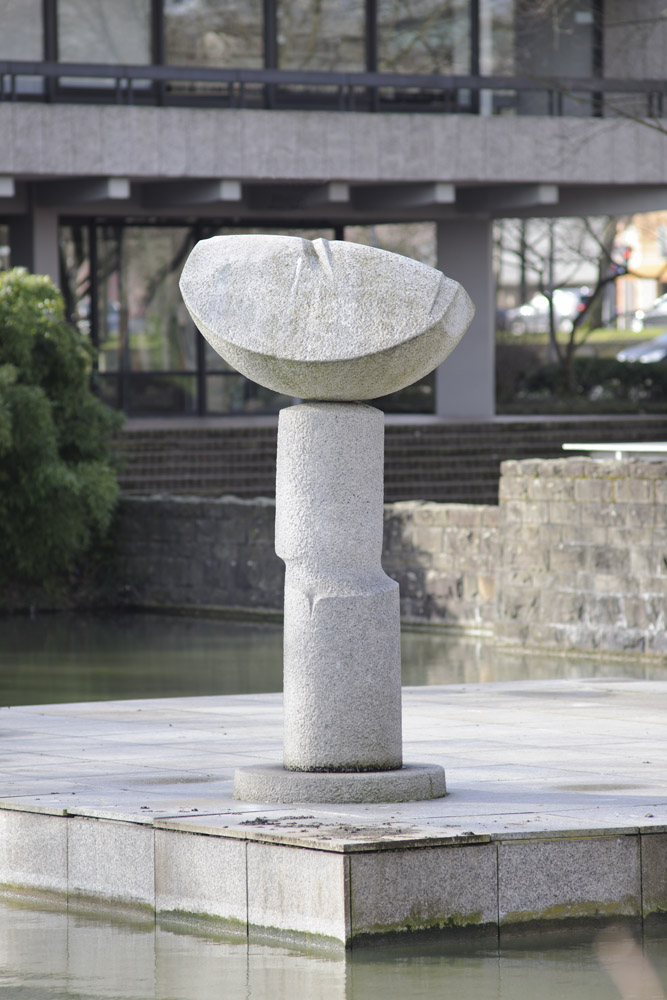
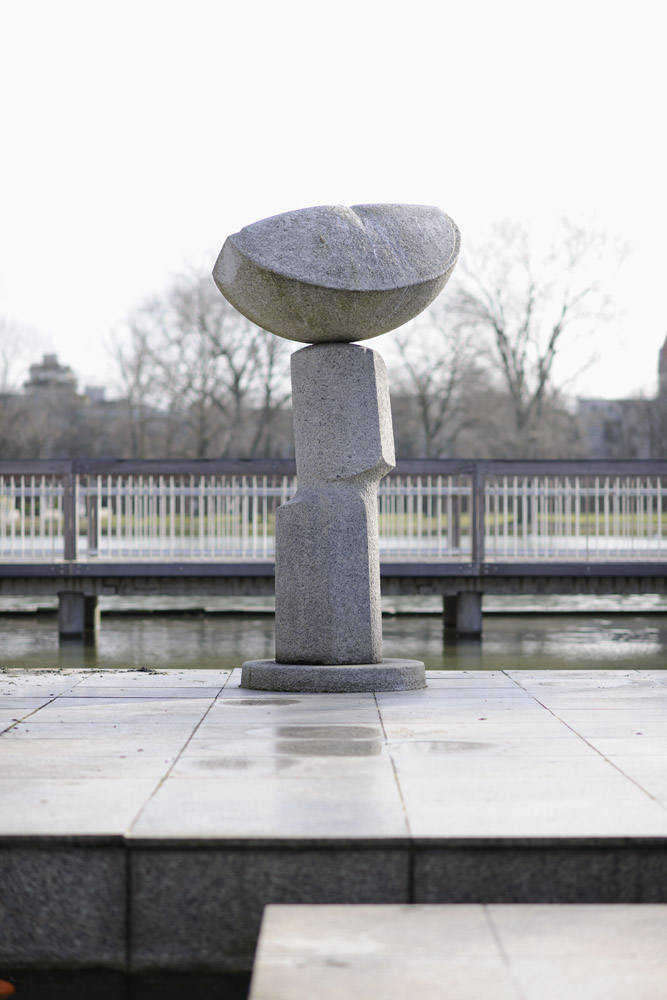
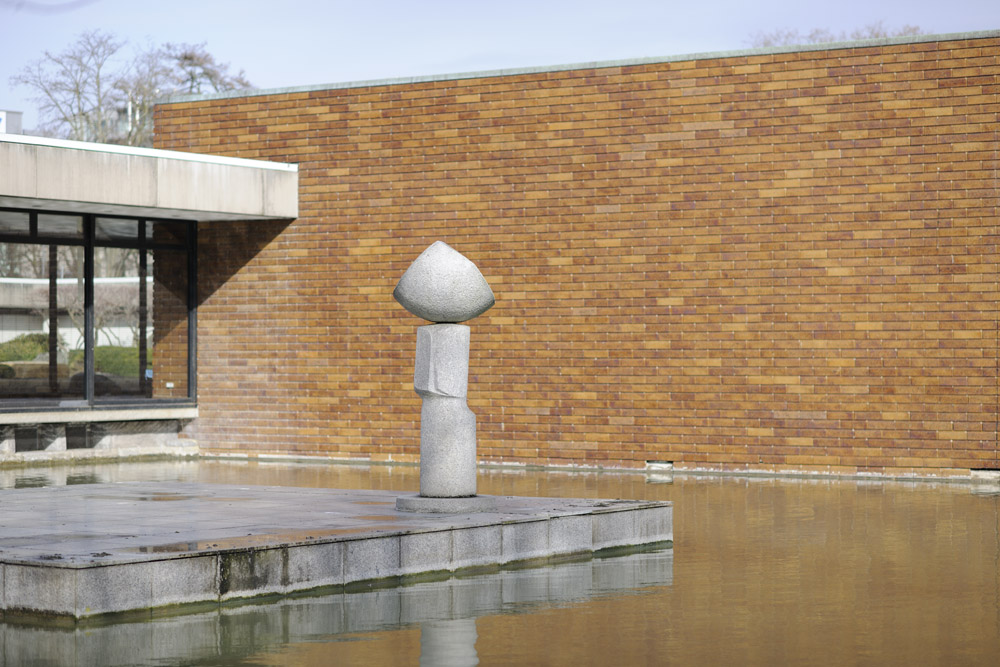
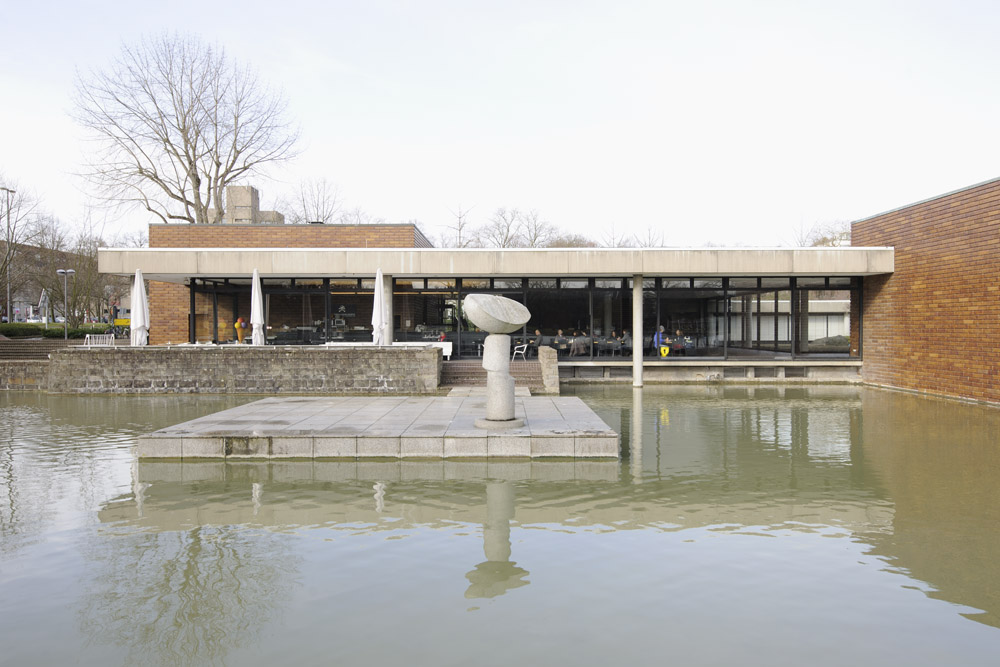
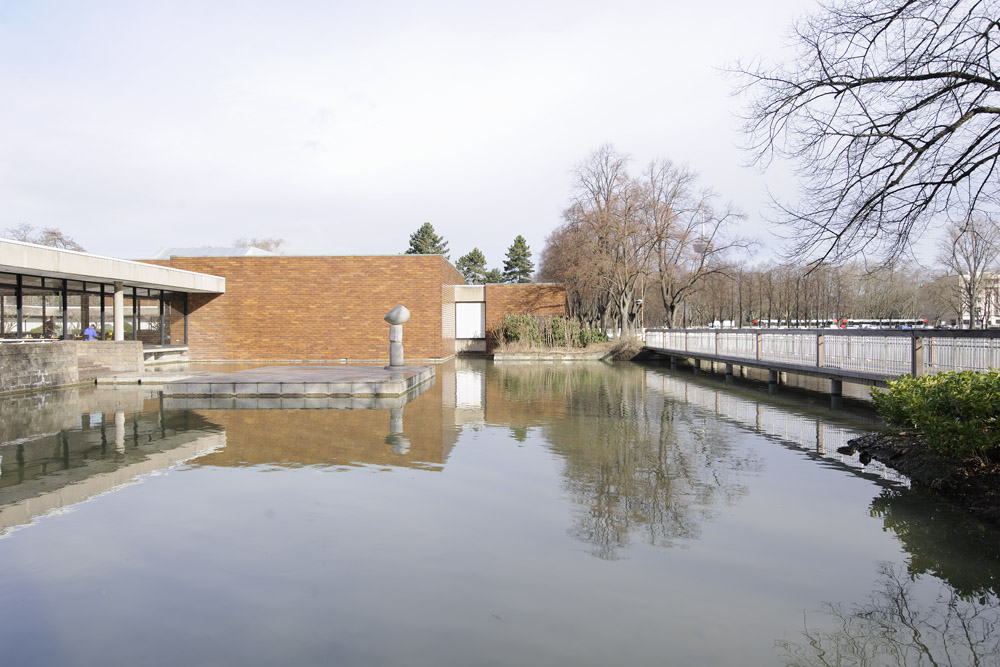
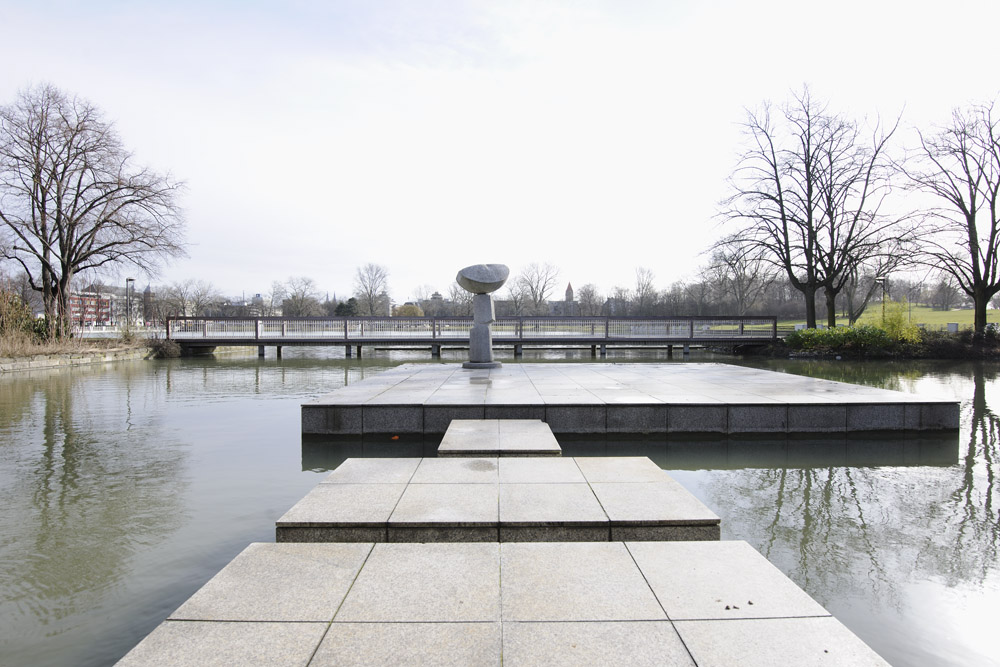
Japanese sculptor Masayuki Nagare designed the interior garden of the Cologne Museum für Ostasiatische Kunst. Nagare was often called the samurai artist because he learned Japanese Shintoism and the art of sword fighting before becoming a sculptor. He gave the garden a modern design throughout, but modeled it on Zen Buddhist gardens, which are meant to function as a miniature representation and interpretation of the entire cosmos. The island in the Aachener Weiher (in front of the museum terrace) and the granite sculpture on top of it are both works by Nagare. With its classic structure of a plinth, column, and load, Flag in the Wind unites contrasting elements: rest and movement, heaviness and weightlessness. “The heavy load, a segment of a sphere, has cracked the shaft in the middle. Its axis has dramatically shifted, as has the partial sphere, which only has a tiny point of contact with the pillar and threatens to lose its balance. Nonetheless, in spite of the broken shaft and minimal contact, the load rests in place. The heavy stone conveys safety, eternity, and calm. The heavy weight of the granite stands in sharp contrast to the poetic title of the sculpture, Flag in the Wind. Nagare suggests the motion of a flag in the wind through these two points of instability. They fascinate the viewer and can almost be felt physically at the center of the sculpture.
This work was a gift to the Museum für Ostasiatische Kunst from the Japanese government.
Reference:
www.welt-der-form.net
www.m.skulpturenfuehrer.de
Masayuki Nagare
← Zur Startseite
Aachener Weiher, Universitätsstr. 100, 50937 Cologne-Lindenthal
